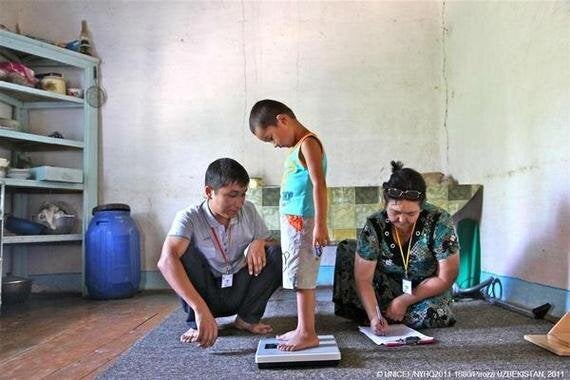
Data has always had something of a dry reputation - not often considered one of the livelier conversation topics around the dinner table.
However, for UNICEF, data is more than just numbers. Data shows us the reality of life for children around the world and has a unique power to make change possible. Data provides an evidence base to influence decision makers, identify gaps and show where we should target our resources and energies. In short, data makes it possible to transform children's lives for the better.
Nothing dull about that!
Twenty five years ago the world made a promise to children - a promise enshrined in the Convention on the Rights of the Child. We promised every child the right to survive and be healthy, the right to an education and the right never to be subjected to violence.
Through the use of data, we can tell where and how far those promises are, and are not, being kept and identify what more needs to be done to fulfil them.
Data shows us that 37% fewer children are stunted as a result of malnutrition since 1990 and girls are now more likely to be in school than ever before. However, data also reveals that problems such as violence against children, child marriage and female genital mutilation are still widespread across some of the poorest countries in the world.
11% of girls in the world are married before the age of 15, jeopardising their rights to health, education and protection. In sub-Saharan Africa 17% of girls are still forced to endure the life-threatening procedure of female genital mutilation, despite growing pressure to end the practice.
Data also shows that almost 4 in 5 (79%) of the world's children experience violent punishment or psychological aggression - at home or in school, increasing the risk of distress, permanent physical disability and long-term physical or mental ill-health.
The meaning of data can often be hidden by statistical averages, which show overall improvement but mask disparities within nations. Children can be in danger of being left behind and becoming 'invisible'. While good progress has been made, for example, on stunting, at the global level, there are still some countries where the life chances of close to half of children under 5 are compromised by this form of chronic malnutrition.
UNICEF's new report - State of the World's Children 2014 in Numbers: Every Child Counts - Revealing disparities, advancing children's rights - exposes some striking inequities. The world's poorest children, for example, are nearly three times less likely than the richest to have a skilled attendant at their birth.
In Niger, 39 per cent of rural households have access to safe drinking water, compared with 100 per cent of urban households. And in Tanzania, 56 per cent of the richest children - but only 4 per cent of the poorest ones - are registered at birth.
Revealing these disparities allows us to understand the barriers children continue to face, and design and monitor initiatives that make it possible to work towards overcoming them.
Data is making it possible to reach the children at greatest risk - those furthest from society's reach. It is up to decision-makers at all levels, from senior officials to those at the grass roots, to make sure that those children - and all children - are granted the opportunity to fully enjoy their rights.
As we mark the 25th anniversary of the Convention on the Rights of the Child this year, UNICEF challenges the world to use data and evidence to inspire creative thinking and find innovative solutions to the most pressing issues confronting children today. The world still has a long way to go to meet all of the promises we made a quarter of a century ago, but if we learn from the data we have, we still have the chance to fulfil them one day soon.
